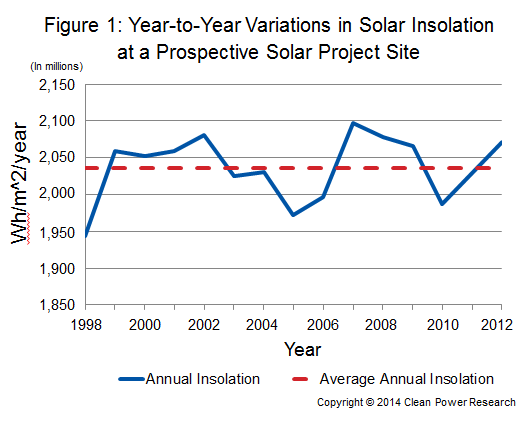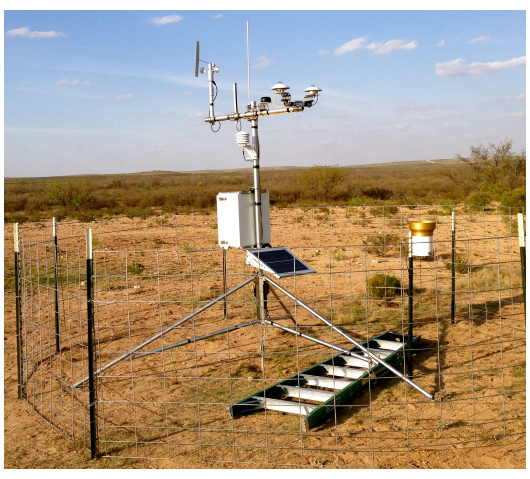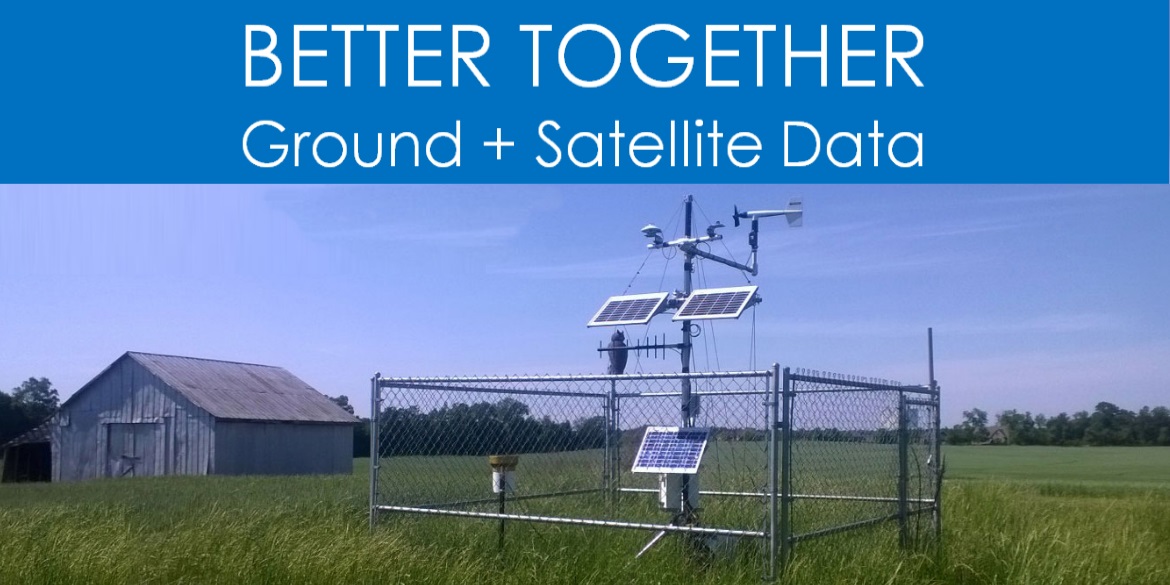If you stopped by the Clean Power Research booth (#118) at the most recent Solar Power International (SPI) Conference in Las Vegas, you would have noticed a tall metal frame supporting some measurement equipment. While this structure could have passed for a new-age conference badge reader, it was actually a solar meteorological station (SMS) provided by GroundWork Renewables.
Clean Power Research uses the most up-to-date and accurate Perez models to generate solar irradiance measurements from satellite images. So, why the SMS? As the result of a recent agreement, Clean Power Research is now collaborating with GroundWork to provide complete irradiance assessment services.
For PV and concentrated solar developers, Clean Power Research and GroundWork provide a seamless solution to understanding the potential solar resource at the highest level of measurement accuracy. This is accomplished by combining high-quality ground irradiance data with SolarAnywhere® satellite data to develop a correlated, long-term solar resource dataset. This results in a dataset that has lower uncertainty than using either the ground or satellite-based datasets on their own.
GroundWork designs, builds, installs and maintains the SMS. The GroundWatch™ data quality program provides daily retrieval and quality control of the ground data. After the desired period of ground measurement, which is typically one-year, Clean Power Research compares and correlates the ground data with concurrent satellite measurements following a procedure recently published at the American Solar Energy Society (ASES) Solar 2014 Conference. This novel data correlation method resolves the differential between ground and satellite-type measurement techniques.
The benefits of combining ground and satellite data
Throughout the PV and concentrated solar plant development process, it is imperative to understand the potential solar resource and its associated uncertainty. Solar resource or irradiance is essentially the fuel to power the plant. Having low or no fuel can impact production and reduce plant revenues, thus extending investment payback times, and upsetting investors.
Collecting ground data measurements at a potential plant site has the advantage of reflecting the actual environmental conditions (irradiance as well as wind speed, temperature, relative humidity, rainfall, soiling rates, etc.). When the SMS is equipped with high-quality, secondary standard pyranometers that are characterized and well maintained, the quality of ground data can lead to quite low measurement uncertainties.
Ground data collection, however, typically only occurs for one or possibly two-years. To understand the long-term viability of a plant, an average solar resource based on multiple years of data is required. Satellite-based irradiance data use consistent image processing techniques over long collection periods (i.e., 16+ years of data), allowing for creation of long-term average datasets that represent the site climatology.

Best-in-class data sources, seamless delivery
Clean Power Research chose to work with Groundwork to provide a complete solution, as their reputation and quality are unsurpassed. All GroundWork SMSs have weekly cleaning regimens to enable quality that approaches the manufacturer’s quoted measurement uncertainty based on controlled lab tests and calibration.
GroundWork also recommends installation of redundant secondary standard pyranometers to collect multiple readings, reduce intrinsic hardware error and cover for periods when individual sensors may fail. All data collected by GroundWork are quality controlled daily through their quality assurance program GroundWatch™, which ensures high recovery and low disqualification rates for optimal use in ground tuning studies.

Example solar prospecting ground station (photo courtesy of GroundWork Renewables)
SolarAnywhere Data measurements are generated autonomously, without the direct use of any ground tuning. This is key, as it is what makes the final correlation step with GroundWork SMS data so powerful. When correlating these two, high-quality sources of irradiance measurements, it reduces uncertainty from that of either data source used independently.
With a seamless solution offered to the PV and concentrated solar industry, developers, project investors and plant owners can be assured that they are using the state-of-the-art approach to achieving the lowest measurement uncertainty on the solar resource potential for their asset. With low uncertainty solar resource measurements, project developers can save on their project financing, which ultimately leads to more profitable projects.
